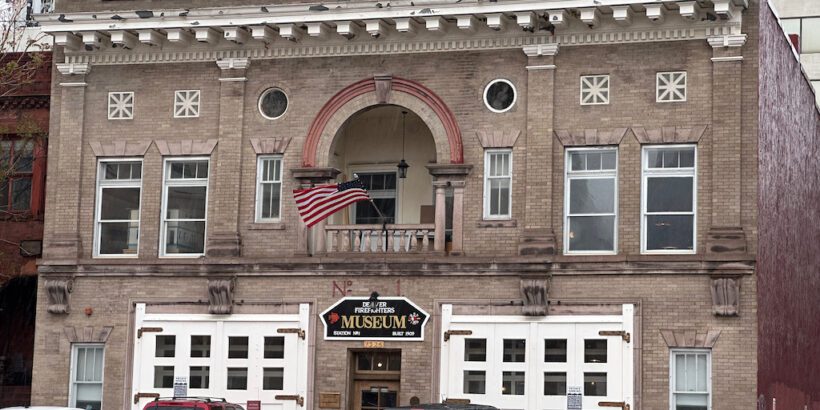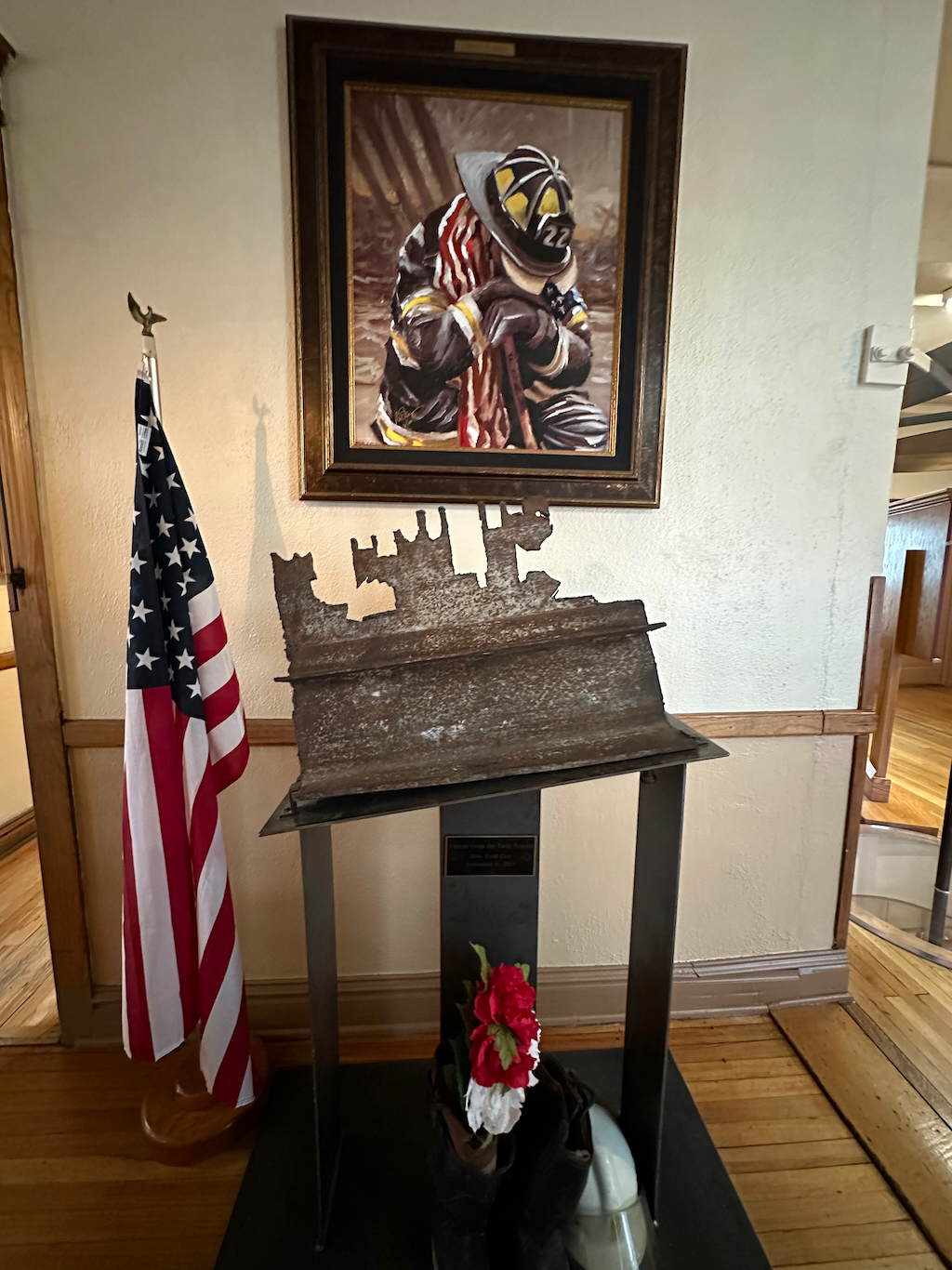The Denver Firefighters Museum brilliantly showcases the heritage of Denver’s firefighting legacy.
From vintage fire trucks that once roared through the city’s streets to the historic living quarters, this museum immerses visitors in the world of firefighting.
In this article, I’ll give you an idea of what to expect when you visit the Denver Firefighters Museum.
Table of Contents
What is the Denver Firefighters Museum?
The Denver Firefighters Museum pays homage to the rich history and heroic efforts of firefighters in Denver, Colorado. Located in a historic brick firehouse, known as “Fire Station No. 1,” the museum tells the story of the evolution of firefighting and offers visitors a unique glimpse into the lives of some of the city’s earliest fire fighters.
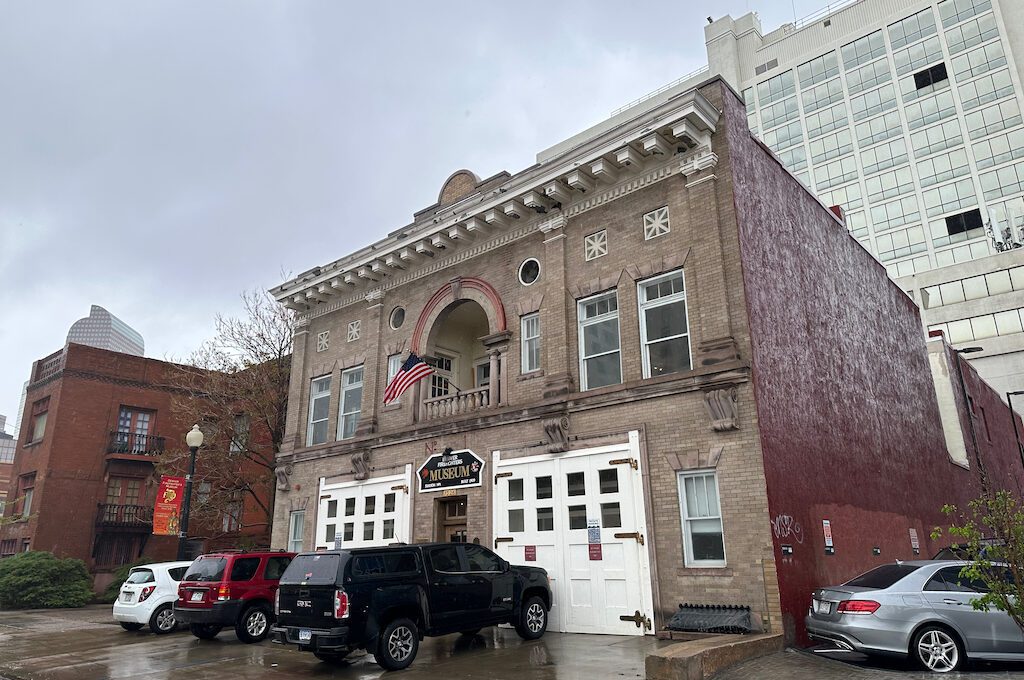
Where is the Denver Firefighters Museum?
The Denver Firefighters Museum is located at 1326 Tremont Place, Denver, Colorado, 80204. It is situated in downtown Denver, near the Civic Center Park and the Colorado State Capitol.
The Denver Firefighters Museum does not have its own parking lot, but there are several paid parking options nearby. There are metered street parking spots available and they are usually around $2.00 per hour with a two hour maximum
Several paid parking lots or garages are also located within a few blocks of the museum, including a lot directly across from the museum.
Admission prices as of May 2023 are the following:
- Adult: $9.00
- Senior/Military/Firefighter: $8.00
- Children 3-12: $7.00
- Children Under 3: FREE
- Member: FREE
Related: Four Mile Historic Park Review: Denver’s Pioneer Legacy Comes Alive
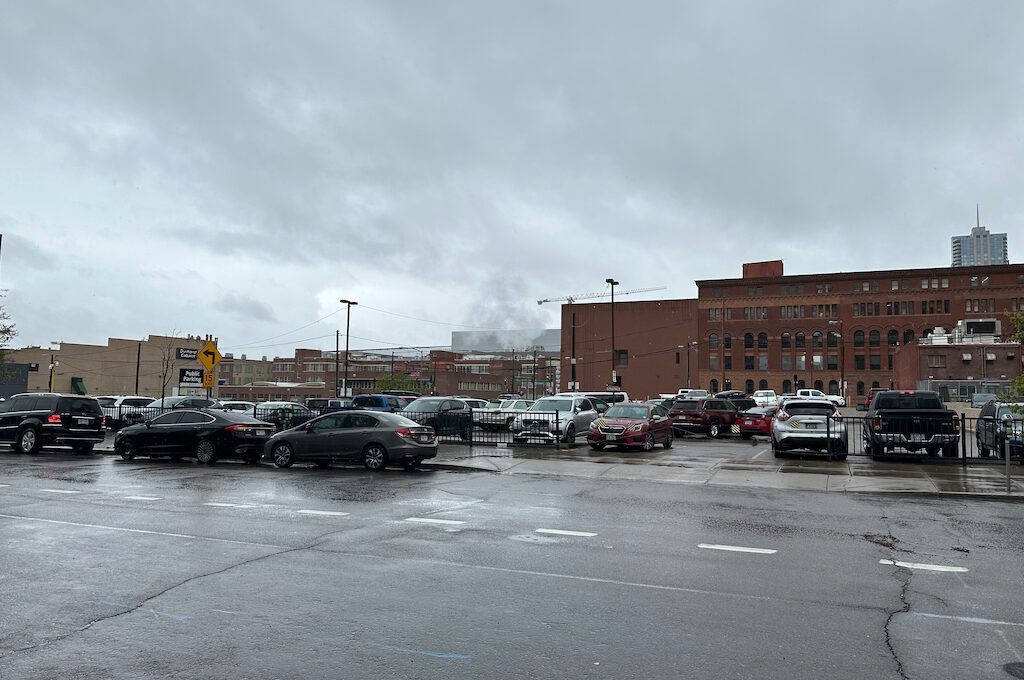
The Denver Firefighters Museum experience
The museum is situated inside an authentic historic firehouse, Fire Station No. 1, constructed in 1909 and listed on the National Register of Historic Places.
After buying your tickets at the front and learning what you can and can’t touch, you can follow the footsteps through the museum taking your time at each exhibit.
Inside the museum, you’ll find a wide array of firefighter memorabilia and equipment used throughout the decades.
Start off marveling at the old communications equipment as it’s a great opportunity to gain some insight into the unique “alarm box” communications and Gamewell Fire Alarm Telegraph dispatch methods dating back to the 1800s.
While you’re there, take the opportunity to delve into the beginnings of “9-1-1” and visit the “watch desk,” also known as the central hub of the fire station, where personnel diligently monitored all fire-related incidents throughout the city.
It was truly fascinating to discover the array of sophisticated techniques they had developed and refined over the years.
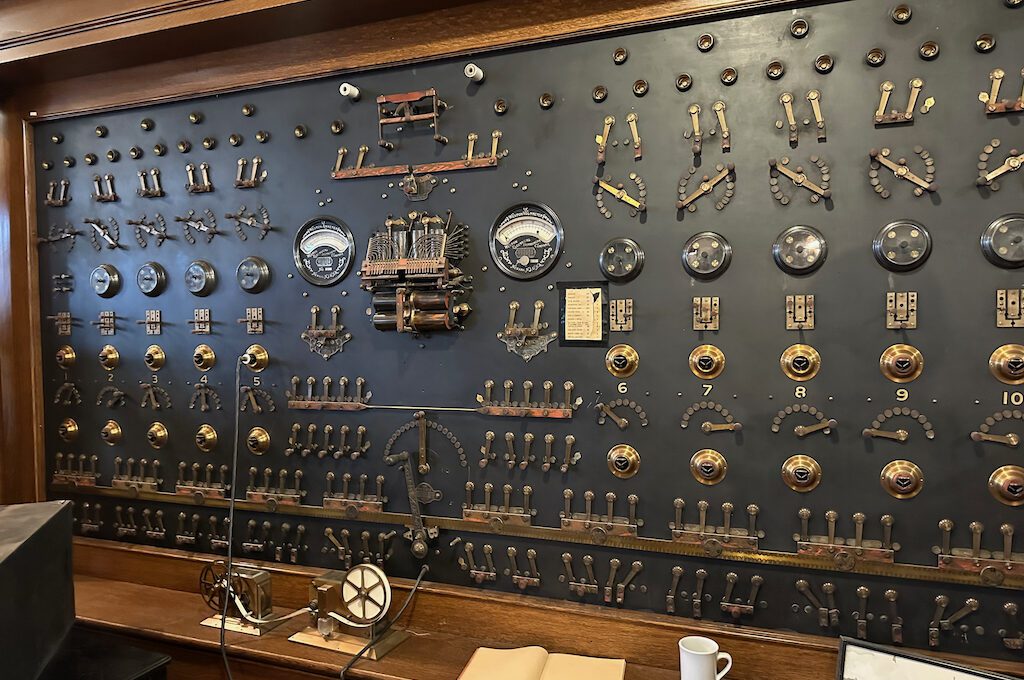
You’ll soon be drawn to the impressive collection of vehicles used by the fire department over the years, which showcase the evolution of firefighting technology since the 1800s.
Check out the 1867 Gleason and Bailey hand-drawn pumper, the first pumping machine of any kind in Denver. And don’t miss the horse-drawn steamer on loan from the New York City Fire Museum.
These steamers represent a time when firefighters relied on steam-powered pumps to deliver high-pressure water streams to extinguish fires. Eventually these were made obsolete by things like motorized fire engines and hydraulic pumps, but these vehicles are beautifully preserved.
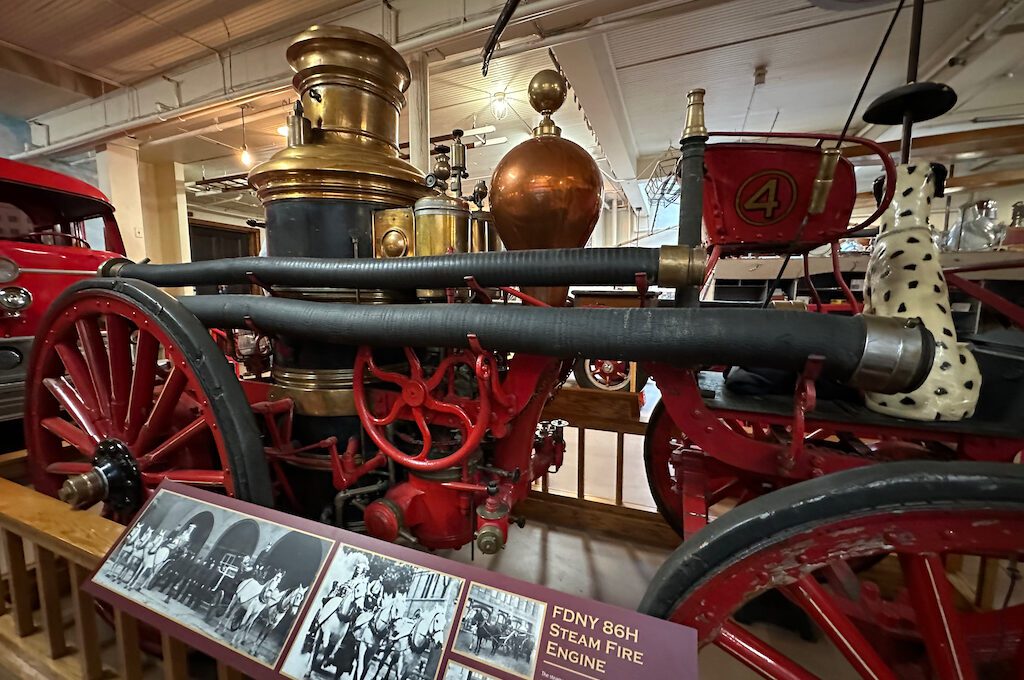
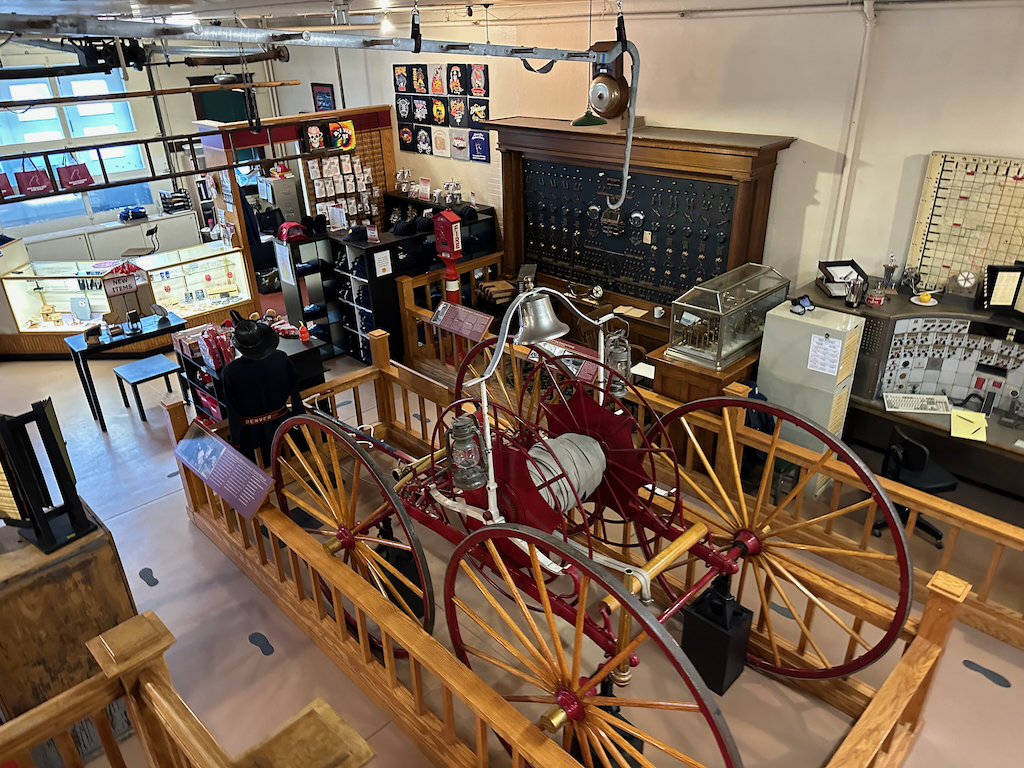
Another classic not to be missed is the 1953 Seagrave engine, commemorating the 70th anniversary of the founding of the Seagrave Corporation of Columbus, Ohio. With its classic look, it truly captures the essence of firefighting in the mid-20th century and evokes a sense of nostalgia. Other classic vehicles can also be admired.
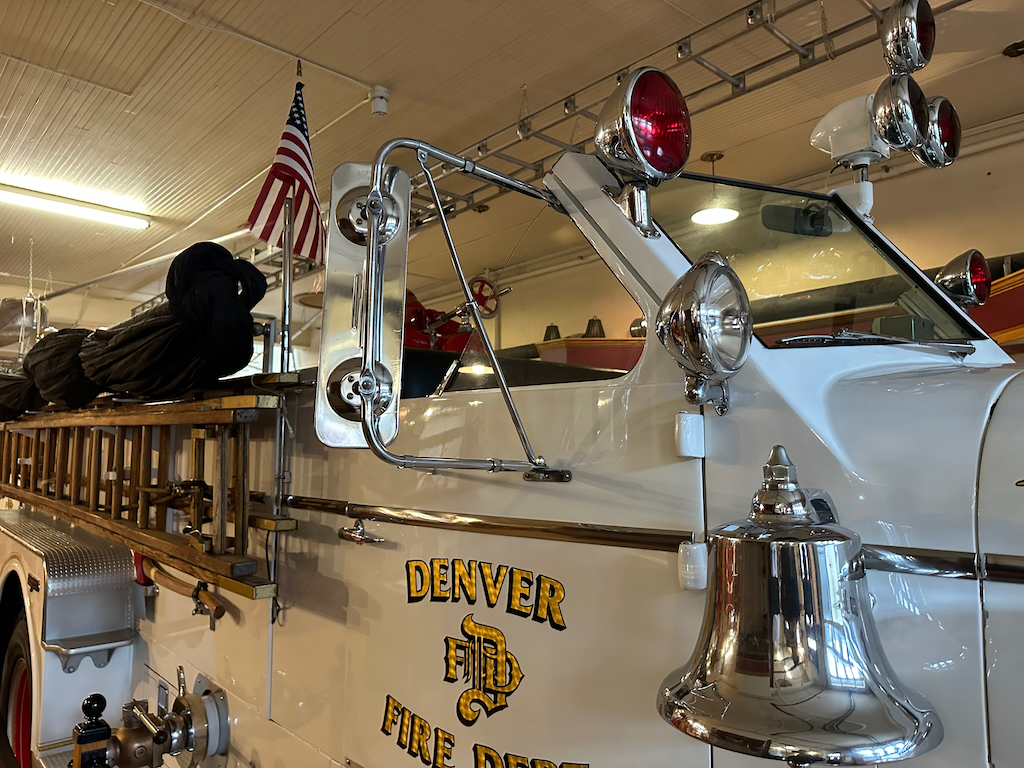
Get up close to a life net which where are those trampoline looking things you probably have seen in cartoons. These were actually used to help save lives from people trapped high up in buildings, although they came with their own risks.
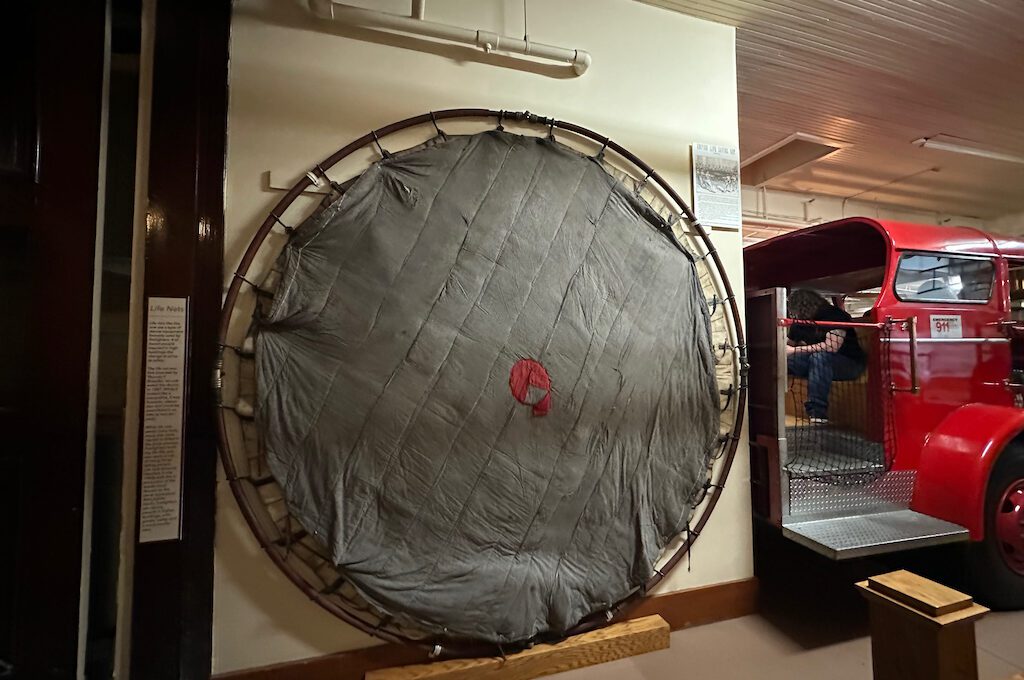
Uniforms worn by firefighters from different eras are on display, showcasing the evolution of their protective gear and the changing styles over time. You’ll see the special “turnout gear,” which includes a protective jacket, pants, boots, and helmet used and a collection of historical firefighter uniforms. Learn about the color-coded helmets and all of the little details related to this equipment.
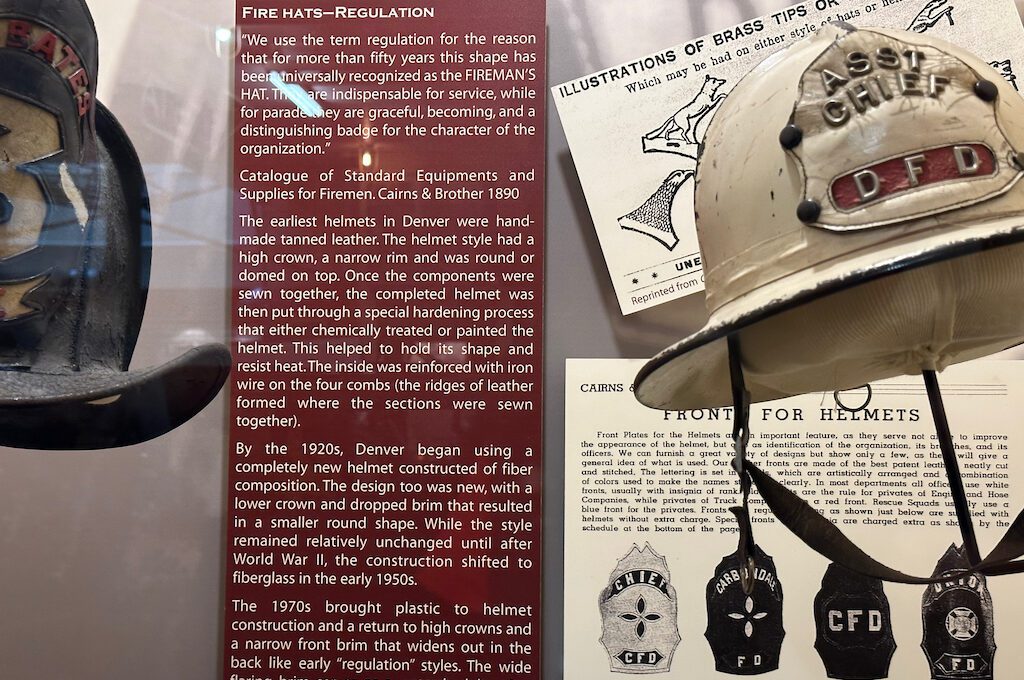
Tools and equipment used by firefighters, such as axes, hoses, and breathing apparatus, give you a glimpse into their daily lives and the challenges they faced in their line of duty. See how they broke through doors, windows, and walls and survived smoke-filled environments while saving lives.
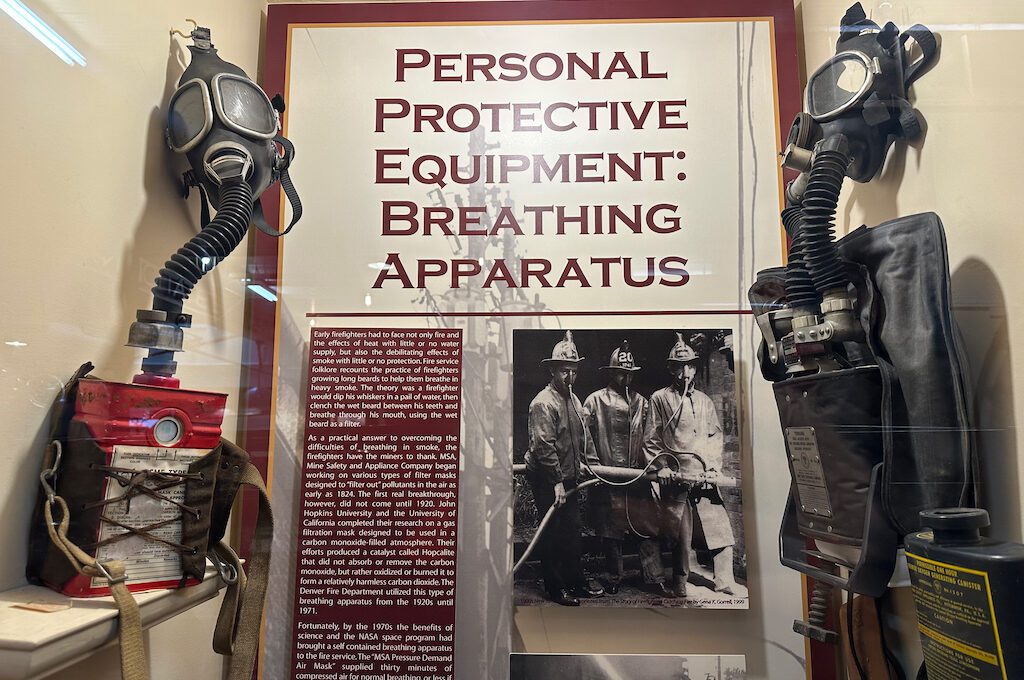
Be sure to make your way up the creaky steps to the second floor, where you can explore the old living quarters. You can check out the family dining room where firefighters would gather with their families for dinner and see how the officers lived in some of the rooms, as well as the dormitory space. Some of the rooms were nice and spacious with their own bathrooms while others were more on the modest side.
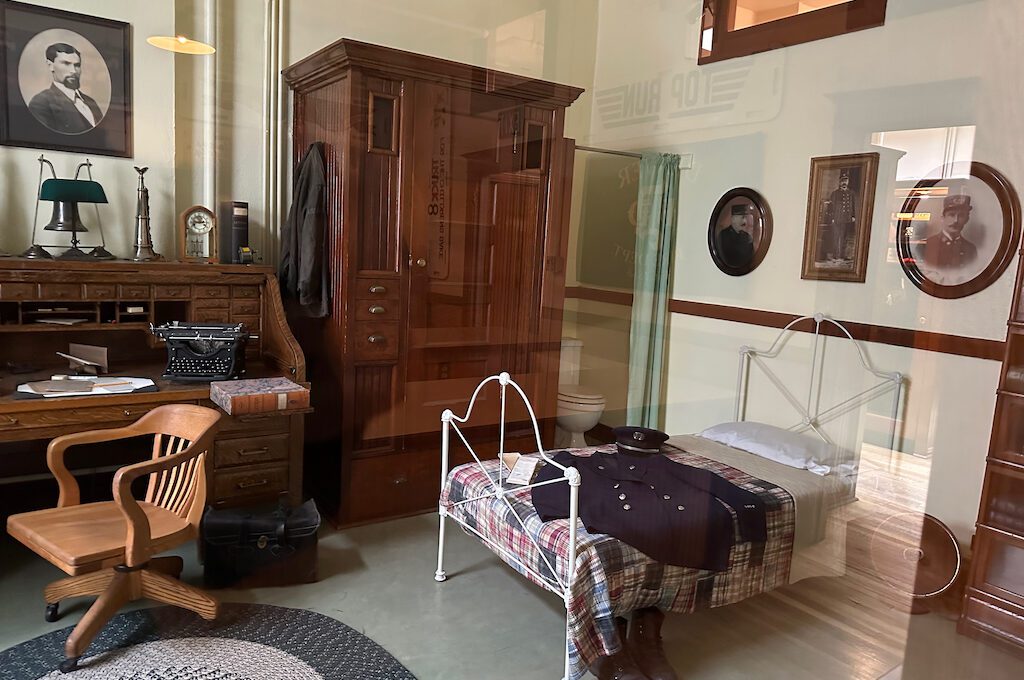
It’s pretty interesting to see all of the different ways they were optimized to respond to calls, doing whatever they could to ensure that firefighters could shave off as much time as possible when heading out on “runs.” Every precious second held significance.
Regrettably, some of these measures came at a price. Injuries involving the sliding poles were not uncommon and you could imagine some of the accidents that took place. Luckily, there are covers on these now to prevent you from accidentally taking the express elevator to the first floor.
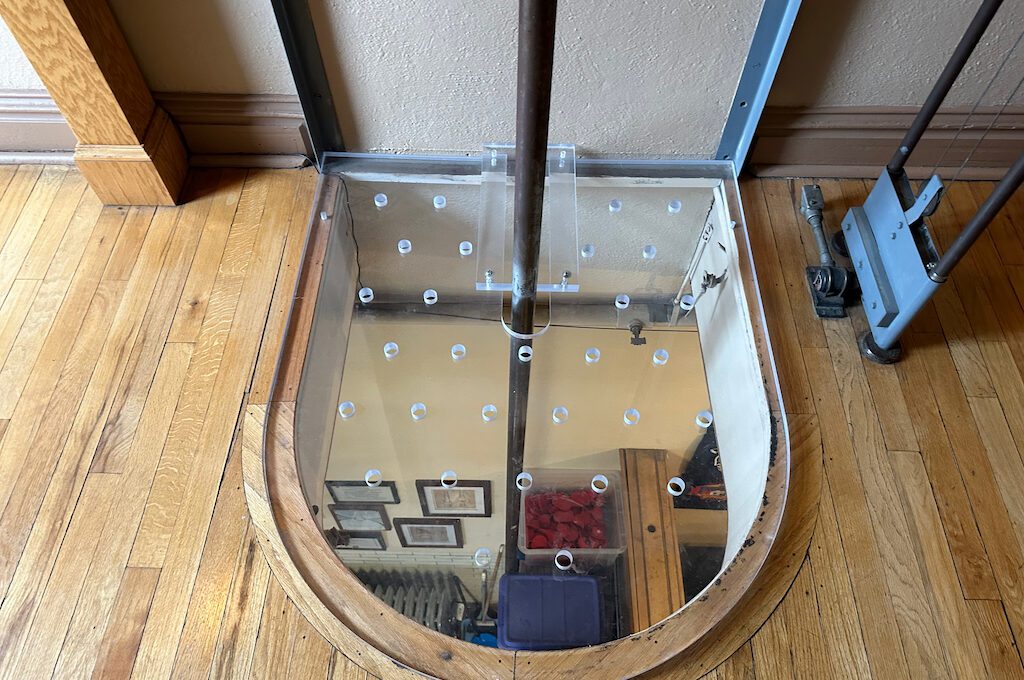
It’s all really cool to see and make sure you don’t skip the vintage bathroom!
Upstairs, you’ll also find a number of other interesting things to see including a small exhibit area dedicated to 9/11. There’s a piece of one of the steel beams on display at the exhibit which remembers the 343 FDNY firefighters who were killed in the terrorist attacks.
This being a fire station museum, it’s no surprise that it’s a great place to bring kids. Upstairs there is something called Little Squirts Square where children can learn about fire safety through hands-on activities and educational displays. Kids will also have the opportunity to try on firefighting gear and role-play as firefighters down stairs.
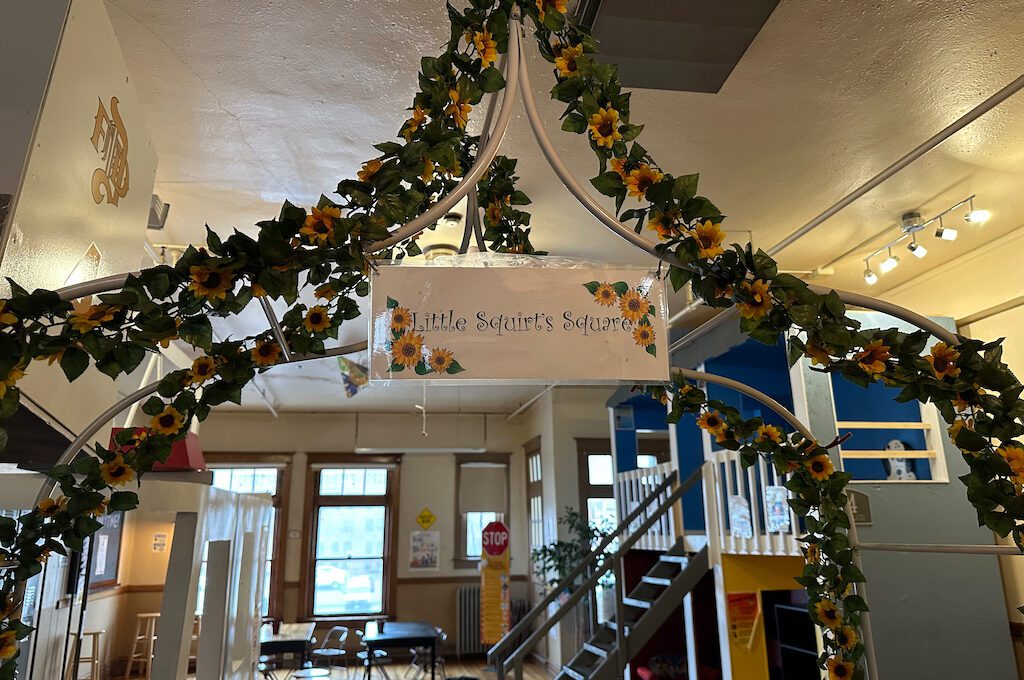
As you wrap up your visit, there is a small gift shops section of the museum. You find different T-shirts, souvenirs, and gift of all sizes and prices, including play sets and fire trucks.
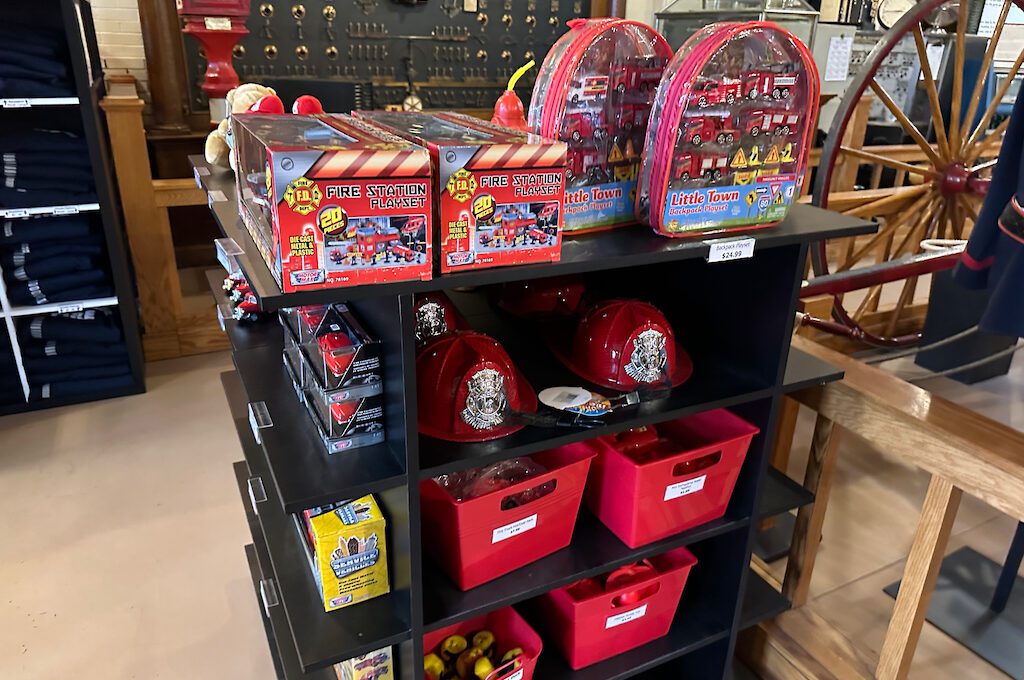
The Denver Firefighters Museum also offers educational programs and guided tours for school groups and other visitors. These programs focus on fire safety, firefighting history, and the importance of emergency preparedness.
Through informative presentations, hands-on demonstrations, and engaging discussions, visitors of all ages have the opportunity to learn from experienced firefighters and gain valuable knowledge about fire prevention and safety measures.
In addition to its permanent exhibits, the museum hosts temporary exhibitions that highlight specific themes or aspects of firefighting. From showcasing the contributions of women in firefighting to displaying the latest advancements in firefighting technology, these rotating displays keep the museum experience fresh and engaging for returning visitors.
Throughout the year, the museum organizes various events and special programs. You can attend fundraisers, lectures, workshops, and demonstrations that offer opportunities to engage with firefighting professionals.
Final word
Stepping inside the Denver Firefighters Museum is not just a journey through history, but also a chance to appreciate the dedication and bravery of firefighters. From vintage fire trucks to fascinating communications exhibits, this museum offers a comprehensive and engaging experience for visitors of all ages.
Daniel Gillaspia is the Founder of UponArriving.com and the credit card app, WalletFlo. He is a former attorney turned travel expert covering destinations along with TSA, airline, and hotel policies. Since 2014, his content has been featured in publications such as National Geographic, Smithsonian Magazine, and CNBC. Read my bio.

